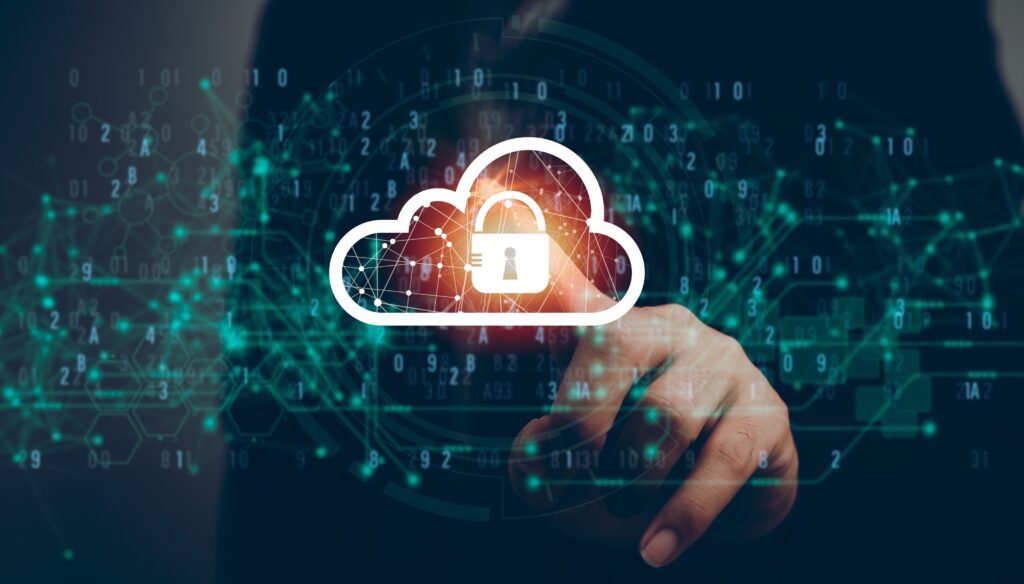As India accelerates its digital transformation, cloud adoption has become a critical enabler for business innovation and growth. With this transformation comes the need to ensure robust cybersecurity and compliance frameworks. Protecting sensitive data and maintaining regulatory compliance are critical for organizations looking to unlock the full potential of cloud computing.
Gartner predicts that by 2025, 99% of cloud security failures will be due to poor customer configuration and inadequate cloud security management. These statistics underscore the need to understand cloud security risks, address them proactively, and implement adequate measures to manage them effectively.
Understanding the importance of cloud security
Cloud computing security is a multifaceted discipline that includes policies, technologies, and controls designed to protect the data, applications, and infrastructure associated with cloud computing. As businesses move to the cloud, they must navigate an evolving world of cyber threats.
According to a report by Cybersecurity Ventures in 2023, global cybercrime costs are expected to reach $10.5 trillion annually by 2025, highlighting the urgent need for robust cloud security measures.
In India, the rise in cyberattacks underscores the need to strengthen cloud security. The country’s booming digital economy has made it a lucrative target for cybercriminals. The Indian Computer Emergency Response Team (CERT-In) reported over 6.74 million cybersecurity incidents in the first half of 2023 alone, underscoring the dire need for secure cloud environments.
Key Components of Cloud Security
Effective cloud security relies on several core components, each of which is integral to protecting data and ensuring compliance. Identity and access management is critical to controlling who can access resources. By implementing strong authentication mechanisms and granular access controls, organizations can prevent unauthorized access to sensitive data.
Data encryption is another key element. Encrypting data both at storage and in transit ensures that even if the data is intercepted, unauthorized users cannot decrypt it.
Furthermore, regular security assessments and continuous monitoring are essential. By conducting vulnerability assessments and penetration testing, businesses can identify and address potential vulnerabilities. Continuous monitoring provides real-time visibility into cloud environments, enabling immediate detection and response to security incidents.
Ensuring Compliance in the Cloud
Compliance in the cloud involves adhering to various regulatory frameworks and industry standards designed to protect data and ensure its privacy. In India, companies have to navigate regulations such as the Information Technology Act, 2000, and sector-specific guidelines such as the Reserve Bank of India’s guidelines for financial institutions.
One significant challenge is the dynamic nature of regulatory requirements. As laws evolve to address emerging threats, organizations need to keep up with the changes and adapt their compliance strategies accordingly. This is where automation tools can play a vital role. Automated compliance management solutions can simplify the process of tracking regulatory changes and ensuring compliance with multiple frameworks.
Furthermore, working with cloud providers is crucial. Cloud providers typically offer a range of compliance certifications, such as ISO 27001, SOC 2, and GDPR, which can help organizations meet regulatory requirements. By leveraging these certifications, businesses can streamline compliance efforts and focus on core operations.
Securing the digital borders
To effectively secure cloud environments, organizations must adopt a multi-layered approach. This includes implementing a robust security architecture, training employees on cybersecurity best practices, and creating a culture of security awareness.
First, it is essential to design a security architecture that integrates different security controls. This architecture should include network security, application security, and endpoint security, ensuring comprehensive protection across all layers of the cloud environment.
According to a report by CrowdStrike, 36% of organizations have suffered a serious cloud data breach due to misconfiguration, making it imperative to adopt a comprehensive security architecture.
Employee training is equally important. Human error remains a leading cause of data breaches, and educating employees on recognizing phishing attempts, using strong passwords, and following secure data handling practices can significantly reduce this risk. A 2023 survey by Mimecast found that 94% of Indian organizations have experienced email-based cyberattacks, highlighting the need for ongoing employee training.
Finally, fostering a culture of security awareness requires embedding cybersecurity into the ethos of the organization. This means ensuring that security is not viewed as an IT issue alone, but as a shared responsibility across all departments. Regular awareness programs and attack simulation exercises can reinforce the importance of security and encourage proactive behavior.
Leveraging Technology to Enhance Security
Advances in technology are offering new ways to enhance cloud security. Artificial intelligence and machine learning are increasingly being used to detect and respond to threats in real time. These technologies can analyze massive amounts of data to identify anomalies and potential security incidents, enabling faster and more effective responses.
In addition, Zero Trust architecture is gaining traction as a robust security model. Zero Trust operates on the principle of “never trust, always verify,” requiring continuous authentication and authorization to access resources. This approach reduces the risk of insider threats and ensures that only authorized users can access critical data.
Another promising technology is Secure Access Service Edge (SASE), which combines network security functionality with wide-area networking capabilities. SASE provides a unified security framework that enhances the protection of cloud environments, especially for remote and distributed workforces.
India's adoption of the cloud
As India embraces the cloud, ensuring robust cybersecurity and compliance is critical. By understanding the core components of cloud security, implementing effective strategies, and leveraging advanced technologies, businesses can protect their digital assets and maintain regulatory compliance. The journey to the cloud is fraught with challenges, but with the right approach, Indian organizations can secure their operations and thrive in the digital economy.
(Ayush Ghosh Chaudhary, Co-Founder and CEO, Skrot Automation)
(Disclaimer: The opinions and ideas expressed in this article are those of the author and do not necessarily reflect the views of YourStory.)



